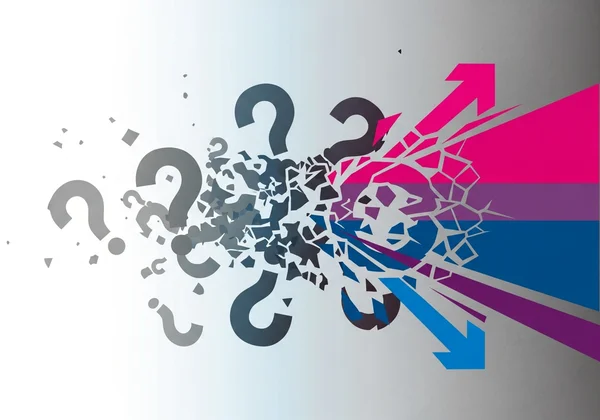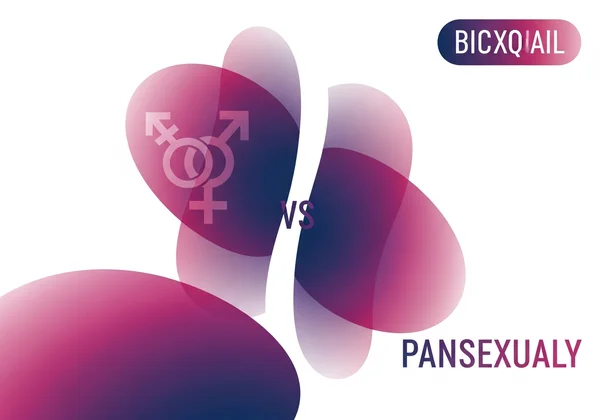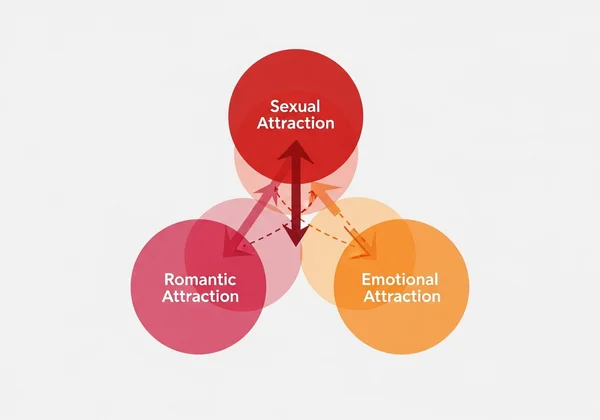What is Bisexual? Explore Your Feelings with Our Gay Quiz
Navigating the landscape of your own feelings can be both exciting and confusing. If you've found yourself attracted to people of different genders, you might be asking questions about what that means for your identity. This journey of self-discovery is deeply personal, and it's completely normal to seek clarity. So, what is bisexual and how does it fit into the beautiful, diverse spectrum of human attraction? Starting with a gay quiz can often provide valuable initial insights.
This guide is designed to be a supportive companion on your path. We'll explore the definition of bisexuality, clear up common misconceptions, and offer insights to help you understand your own unique experience. Whether you're just starting to question or seeking to better understand yourself, you've come to a safe place to learn. Is bisexuality the right term to describe your feelings? Let’s find out together. A great personal starting point is our sexuality quiz.

What Does Bisexuality Truly Mean? Defining Attraction
At its heart, understanding bisexuality begins with a clear, inclusive definition. It's about moving past stereotypes and grasping the reality of how bisexual people experience attraction. This is a crucial step in validating your own feelings and the experiences of others.
Attraction to More Than One Gender: The Core Definition
The most widely accepted definition of bisexuality is the potential for romantic, emotional, or sexual attraction to more than one gender. This doesn't mean attraction to only men and women. It's an inclusive term that acknowledges that attraction isn't limited to a binary. A bisexual person might be drawn to men, women, non-binary individuals, or people of any gender identity. The key element is that their attraction isn't exclusive to just one gender.
Beyond Labels: Understanding the Bi+ Umbrella
The conversation around attraction has evolved, leading to a more nuanced understanding of identities. The term "Bi+" is often used as an umbrella to include various identities that involve attraction to multiple genders. This includes pansexuality (attraction regardless of gender), omnisexuality (attraction to all genders, with gender playing a role in the attraction), and polysexuality (attraction to multiple, but not all, genders). While these labels have distinct meanings, they all fall under the broader umbrella of multi-gender attraction, with bisexuality being the most well-known term.
Debunking Stereotypes: Common Myths About Bisexuality
Unfortunately, bisexuality is often surrounded by harmful myths that can cause confusion and pain. It's important to challenge these falsehoods:
- Myth: Bisexuality is just a phase or a stepping stone to being gay or straight.
- Truth: Bisexuality is a valid, stable sexual orientation. For countless people, it is a lifelong identity.
- Myth: Bisexual people are confused or indecisive.
- Truth: Being attracted to more than one gender is not a sign of confusion. It's simply a different pattern of attraction.
- Myth: Bisexual individuals are inherently non-monogamous or unfaithful.
-
Truth: Relationship style is separate from sexual orientation. Bisexual people are just as capable of being in committed, monogamous relationships as anyone else.
-

Bisexual vs. Pansexual: Key Differences and Similarities
One of the most common points of confusion for those exploring their identity is the difference between bisexuality and pansexuality. While there is significant overlap and some people use the terms interchangeably, understanding the distinction can help you find the language that feels most authentic to you.
Distinguishing the Terms: Who Do You Feel Drawn To?
The primary difference often lies in how gender factors into attraction. For many bisexual people, gender is a component of their attraction. They might feel attracted to men and women differently, or have a preference for one gender over another, while still being attracted to multiple.
In contrast, the definition of pansexuality typically emphasizes attraction regardless of gender. A pansexual person might describe themselves as being attracted to a person's energy, personality, or soul, with gender not being a determining factor in their attraction at all. The journey to find your insights is about discovering which description resonates more with your personal experience.

Why Labels Matter: Finding the Right Fit for You
So, why do these labels matter? For many, finding the right label is an act of empowerment. It provides a name for your feelings, helps you find a community of people with shared experiences, and gives you the language to describe yourself to others. However, it's also important to remember that labels are tools, not boxes. You have the right to choose the label that feels best for you, or to use no label at all. The goal is self-understanding and acceptance, not fitting into a predetermined category.
Signs of Being Bisexual: Exploring Your Attractions and Feelings | Start a Sexuality Quiz
If you're wondering if you might be bisexual, it can be helpful to reflect on your own patterns of attraction and feelings. There's no single "test" to determine your sexuality, but certain reflections can provide clarity. This process is less about checking boxes and more about gentle introspection.
Reflecting on Attraction: Past Experiences and Current Feelings
Take some time to think about your history. Have you ever had crushes on or felt drawn to people of different genders? This could include celebrities, fictional characters, friends, or classmates. Consider your fantasies and daydreams. Your internal world of attraction is just as valid as your real-world dating experiences. Don't dismiss feelings just because you haven't acted on them.
Understanding Different Types of Attraction: Emotional, Romantic, Sexual
Attraction is complex and multi-layered. It's not just about who you want to be physically intimate with.
- Sexual Attraction: A desire for physical or sexual contact with another person.
- Romantic Attraction: A desire for a romantic relationship with another person, which might involve emotional intimacy and companionship.
- Emotional Attraction: A desire to get to know someone and connect with them on a deep, emotional level.
You might find that your patterns for each type of attraction differ. For example, you could be romantically attracted to women and non-binary people, but sexually attracted to men as well. Exploring these nuances is a key part of the journey of self-discovery.

It's Okay to Be Unsure: Sexuality as a Journey, Not a Destination
It is absolutely crucial to remember that it is okay to be uncertain. For many people, sexuality is fluid and can evolve over time. You don't need to have all the answers right now. Give yourself permission to explore your feelings without pressure or judgment. This journey is yours alone, and it unfolds at its own pace. If you need a space to process these thoughts, a tool like a gay quiz can be a helpful, private resource. Our sexuality quiz is designed for just that purpose.
Navigating Your Bisexual Identity: Self-Acceptance and Support
Understanding your identity is the first step. The next is learning to embrace it and find the support you deserve. This part of the journey is about building confidence, finding your people, and prioritizing your well-being.
Embracing Your Truth: The Power of Self-Acceptance
Self-acceptance is the foundation of a healthy identity. It means recognizing that your attractions are a natural and valid part of who you are. This can be a challenging process, especially if you've grown up with negative messages about bisexuality. Be patient and kind to yourself. Celebrate small moments of clarity and affirm that your feelings are real and important.
Finding Your Community: Connecting with Other Bi+ Individuals
You are not alone. There are millions of bisexual and Bi+ people in the world. Connecting with a community can be incredibly validating and empowering. Look for online forums (like subreddits such as r/bisexual), social media accounts that celebrate bi+ identities, or local LGBTQ+ centers. Hearing others' stories and sharing your own can help dissolve feelings of isolation and build a strong sense of belonging.
When to Seek Professional Support: Resources for Your Well-being
Sometimes, the journey of self-discovery can bring up difficult emotions or anxiety. If you find yourself struggling, seeking support from an LGBTQ+-affirming therapist or counselor can be incredibly beneficial. A professional can provide a safe, non-judgmental space for you to explore your feelings, develop coping strategies, and work towards self-acceptance. Your mental health is a priority.
Your journey of understanding and embracing your identity is a powerful one. We hope this guide has illuminated the path, helping you recognize that attraction to more than one gender is a valid, beautiful, and complete identity. Remember, your feelings are valid, and your path is unique. Be patient, be curious, and most importantly, be kind to yourself as you explore the beautiful, diverse spectrum of attraction.
Ready to take the next step in your self-reflection? Take our free gay quiz to gain personalized insights in a safe and supportive environment. It’s a great tool to help you organize your thoughts and continue your exploration.
What a Sexuality Quiz Can Tell You About Bisexuality
Is bisexuality a phase, or is it a stable identity?
This is a common myth. For the vast majority of people, bisexuality is a stable and lifelong sexual orientation. While a person's understanding of their identity can evolve, the orientation itself is not a temporary "phase" on the way to being gay or straight.
Can I be bisexual if I've only dated one gender so far?
Absolutely. Your sexual orientation is defined by your potential for attraction, not by your relationship history. You don't need to have specific experiences to validate your identity. If you feel an attraction to more than one gender, that feeling is valid, regardless of who you've dated.
What's the core difference between being gay, straight, and bisexual?
The difference lies in the gender(s) a person is attracted to. A straight (or heterosexual) person is attracted to a different gender. A gay or lesbian (or homosexual) person is attracted to the same gender. A bisexual person is attracted to more than one gender.
Will taking a sexuality quiz help me understand if I'm bisexual?
A well-designed gay quiz can be an excellent tool for self-reflection. It won't give you a definitive diagnosis, but it can provide a structured way to think about your feelings and attractions. By presenting you with different scenarios and questions, it can help you see patterns you may not have noticed before. If you're looking for a starting point, you can try our gay quiz now to see what you discover about yourself.